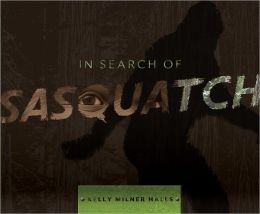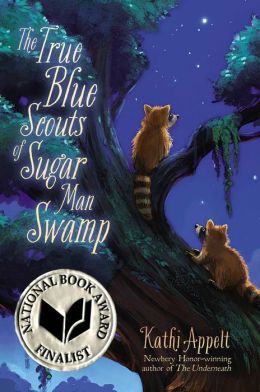Back in March I wrote a review of Kelly Milner Hall's well-researched, informative In Search of Sasquatch.
Well, I came across a book that would be an excellent middle grade fictional companion - The Abominables by the late Eva Ibbotson.
What a great way to tie in a wonderful read with science! Ibbotson's book transports five abominable snowmen to a stately home in England. These gentle Yetis have Mt. Helen's size personalities that kids will love!
A perfect pairing for gift giving or classrooms!
I'm Nancy Castaldo, a curious author trying to make a difference one book at a time. Thanks for visiting my blog where you'll find curated book selections, musings on the environment, ways to engage students in STEM, and cool things about wildlife. I also have a passion for photography, so you'll find some photos too.
Thursday, December 19, 2013
Wednesday, December 11, 2013
Connections for the Classroom
I just finished reading Melissa Stewart's great blog post on ways that authors can help educators and thought I'd take a moment to follow her advice and provide some connections for two of my books.
Keeping Our Earth Green provides readers with over 100 hands-on ways to help save the Earth. Readers will discover facts about pollution, global warming, biofuels, and much more. Try experiments at home or in a classroom. Read about the cool things being done to help our planet. Discover Earth Heroes – real people who have made a difference. Take action! A perfect pairing with this book is Loree Griffen Burns' Citizen Science.
North America boasts a surprising number of rainforests, including El Yunque National Forest in Puerto Rico, Olympic National Forest in Washington State, Chugah and Tonga National Forests in Alaska, and the forests in Hawaii. Rainforests: An Activity Guide takes kids through the common layers of the rainforest, from the forest floor to above the enclosed canopy, and introduces them to plants, animals, and people around the world, including those from the temperate rainforests of North America to the tropical rainforests of Southeast Asia, Africa, and South America. Pair it with Melissa Stewart's No Monkeys, No Chocolate.
A great chapter book to accompany these titles is Jean Craighead George's One Day in the Tropical Rain Forest. This is a perfect title for grades 2-5.
Looking for an activity for your classroom? There are plenty of activities in Rainforests, but here is another for you to try:
Henri Rousseau Green Rainforest Watercolor Paintings
Procedure: Introduce students to the art of Henri Rousseau. Show artwork and if time permits read The Fantastic Jungles of Henri Rousseau or Welcome to the Greenhouse by Jane Yolen. Draw attention to the different layers of rainforest plants in the paintings and the different leaf shapes. Look at photos of tropical rain forests. Ask students to think about the trees outside and how many different leaf shapes they see.
Discuss why a brightly colored parrot or orchid flower would stand out
in a rainforest. Why is that an
advantage? Add one or two small pieces of brightly colored tissue paper to
represent a parrot or flower among all the rainforest green.
Keeping Our Earth Green provides readers with over 100 hands-on ways to help save the Earth. Readers will discover facts about pollution, global warming, biofuels, and much more. Try experiments at home or in a classroom. Read about the cool things being done to help our planet. Discover Earth Heroes – real people who have made a difference. Take action! A perfect pairing with this book is Loree Griffen Burns' Citizen Science.
North America boasts a surprising number of rainforests, including El Yunque National Forest in Puerto Rico, Olympic National Forest in Washington State, Chugah and Tonga National Forests in Alaska, and the forests in Hawaii. Rainforests: An Activity Guide takes kids through the common layers of the rainforest, from the forest floor to above the enclosed canopy, and introduces them to plants, animals, and people around the world, including those from the temperate rainforests of North America to the tropical rainforests of Southeast Asia, Africa, and South America. Pair it with Melissa Stewart's No Monkeys, No Chocolate.
Another resource to pair with these books is Eric Carle's "Slowly, Slowly,"Said the Sloth. Watch Eric Carle speak about his inspiration for writing this book.
Looking for an activity for your classroom? There are plenty of activities in Rainforests, but here is another for you to try:
Henri Rousseau Green Rainforest Watercolor Paintings
Procedure: Introduce students to the art of Henri Rousseau. Show artwork and if time permits read The Fantastic Jungles of Henri Rousseau or Welcome to the Greenhouse by Jane Yolen. Draw attention to the different layers of rainforest plants in the paintings and the different leaf shapes. Look at photos of tropical rain forests. Ask students to think about the trees outside and how many different leaf shapes they see.
Instruct students to begin drawing
different shapes of leaves on their watercolor paper lightly with pencil. Add
spikes, rounded leaves, etc. Draw
plants at different levels, filling the entire paper.
Paint the leaves using as many
different shades of green possible.
Instruct students on how to mix colors and make different shades of
green.
Limit the use of watercolor to yellow,
blue, green – show the color wheel and discuss how many different colors of
green you can obtain from mixing colors.
Materials: pencils,
watercolor paper, green, yellow, blue watercolors. Water and brushes.
Bright colored tissue paper, glue stick
Monday, December 9, 2013
Naturally Speaking: The True Blue Scouts of Sugar Man Swamp by Kathi A...
Naturally Speaking: The True Blue Scouts of Sugar Man Swamp by Kathi A...: Raccoons, gators, rattlesnakes, and the Sugar Man -- what more could you want in a Texas swamp? Maybe a greedy developer and some cr...
The True Blue Scouts of Sugar Man Swamp by Kathi Appelt
Kathi Appelt has created a rip-roaring, glorious eco-tale reminiscent of a true American folktale. The True Blue Scouts of Sugar Man Swamp is swampalicious!
The theme of ecologist/conservationists/preservationist vs. developer is pretty common, but Appelt's story is fresh and woven as intricately as the swamp ecosystem itself.
Teachers can use this along with a lesson on wetlands. Check out the EPA's Wetlands Reading List for Pre-K through Grade 12.
Subscribe to:
Comments (Atom)
Congratulations, Heather Lang, on SUPERSQUADS!
Thank you so much for sharing the release of SUPERSQUADS, the latest in your Animal Heroes series with us! Young readers love STEAM books ...

-
As programs are canceled throughout the country and modes of revenue dry up during this pandemic, here is a list of resources for freelance ...
-
I love to travel. I'm one of those people that get butterflies of excitement anytime I am near an airport. I follow #roamtheplanet an...








